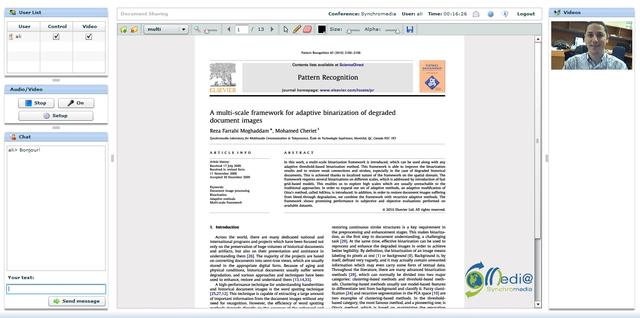Project Title: The Indian Ocean World: The Making of the First Global Economy in the Context of Human-Environment Interaction
Project Investigators:
Partner:
Project Funder: Social Sciences and Humanities Research Council of Canada (SSHRC)
![]()

Description:
What problem are we solving?
This innovative project is a large, international and multi-disciplinary program of collaborative research that aims to examine the history of human-environment interaction in the Indian Ocean World—an arena of primary geo-political importance that includes eastern Africa, the Middle East, Southeast Asia and emerging superpowers, China and India—from economic, scientific and social viewpoints using cutting edge technologies for document and data analysis, collaboration and communication.
This project is being funded by the Social Sciences and Humanities Research Council of Canada (SSHRC) for a period of seven years and a budget of $2.5 million.
Synchromedia role
Synchromedia experience in document and map image analysis will play a central role in researching all questions posed by the project. Under the direction of Prof. Cheriet, Synchromedia team will bring to the project complementary expertise in the areas of document image understanding, information discovery and mining, and in the field of document heritage recreation through pioneering the development of novel techniques to assist scholars and end-users to recreate and analyze historical maps and documents.
Synchromedia will employ Automatic Data Extraction and Multi-spectral imaging for data enhancement, mining, and analysis. Synchromedia will also develop knowledge mining systems to discover patterns and infer new knowledge from data and objects distributed over a number of nodes using multilayer hierocratic interactions independent of the scale and complexity of the system.
Synchromedia Laboratory is equipped with a high-definition 8-band multi-spectral camera able to perform reflectance and UV-florescence spectroscopy of manuscripts. New filters for the camera will be designed using differential spectroscopy methods to improve imaging. The camera will be used to (i) create a dataset of multi-spectral images of historical documents on the IOW held in Montreal libraries; (ii) retrieve true text from multi-spectral images using (a) spatial-frequency analysis based on wavelet transforms or statistical methods such as Bayesian methods; and (b) level set framework and multi-level classifiers; and (iii) achieve visualization of multispectral images by considering non-linear mappings from the multi-spectral cube to the single-spectral plane using a priori information obtained in restoration and enhancement stages. Synchromedia will develop a generalized nonlinear mapping to reduce the sparsity of the multi-spectral cube.
Synchromedia will provide a highly innovative service-based virtual environment to provide real-time state-of-the-arts telepresence and collaboration.


Leave A Comment